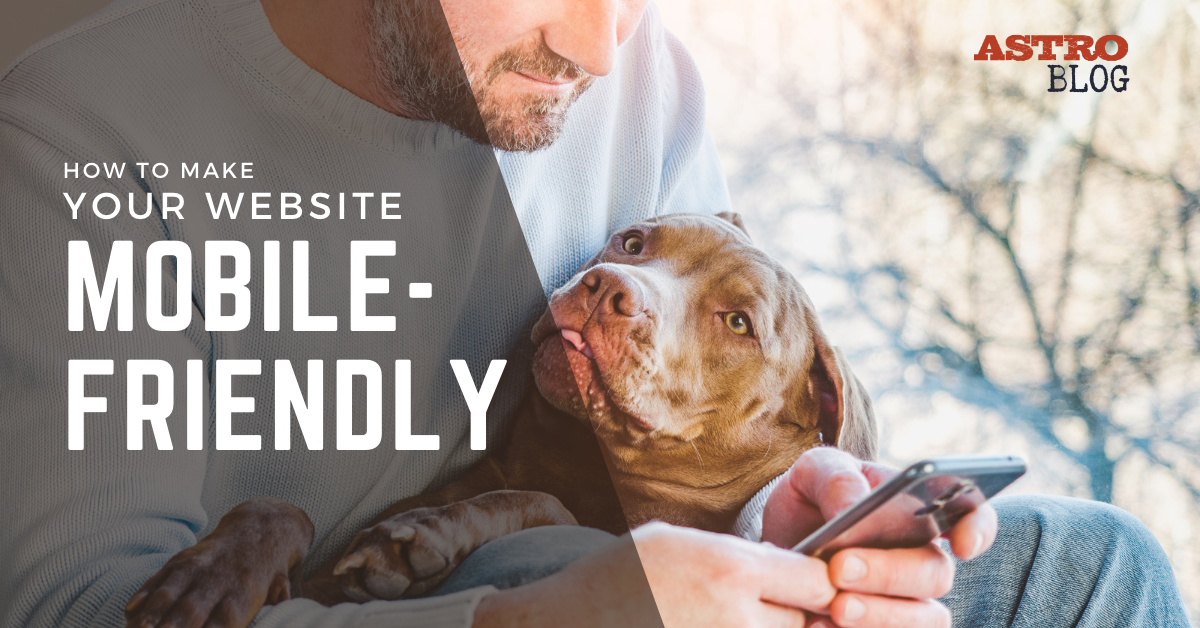Take a minute to Google a few of your favorite local businesses. Do they have a website? If so, is it easy to navigate? Can you find what you need? Despite the fact that we’re living in the digital age, there are plenty of businesses stuck in eras gone by. Either they don’t have a website, or what they do have might be a bit of a mess, especially from the perspective of people visiting on mobile.
Your customers are on the go and they need to be able to access your site while out and about, away from their computers. This means it’s crucial that you optimize your website for mobile phones, which can include everything from making design changes to tweaking some technical settings.
Why Is It Important to Have a Mobile-Friendly Website?
Today, more than half of all web queries come from mobile devices, so simply having relevant, easy-to-find content is a huge part of making your website mobile-friendly. People just aren’t running as many searches from their home computers as they used to. If your website isn’t mobile-friendly, your customer is likely to simply head back to Google, increasing your bounce rate and costing you business.
When a business has a website that’s out-of-date or hard to read on mobile, everyone suffers—you lose out on valuable web traffic, and the customer is frustrated and unlikely to be back. As an independent pet retailer that doesn’t have the same kind of automatic traffic many big box stores’ sites get, optimizing your page for visitors is even more important.

Customers need to be able to find you, and let’s face it; they just aren’t flipping through a phone book anymore. People and their pets want a personal touch, and they’re more than willing to go to a smaller business and even pay more for a quality product. However, if you don’t have a website or it isn’t accessible on a mobile device, how will your customers ever find you?
If you’re getting stressed out already, there’s no need! Starting this process is easier than you think, especially when you are able to put yourself in your customer’s shoes and empathize with their needs. Consider a particular business website you enjoy or think about what you usually want to find on a business webpage.
What do you like about the website? What are the most helpful features? Are there some things that could be improved or that you might do differently on your own webpage? More than likely, at least a few things come to mind. Now that you have some general ideas in mind, here are six tips for mobile optimization to help get you inspired!
1. Understand Where You’re Starting From
Getting your website optimized for mobile can be as easy as starting with a few Google searches. Search your name and like-minded businesses in the area. Does your website come up? Is it easy to find or is it buried underneath competition? How does it compare to other businesses’ websites? A big part of making sure your website is mobile-friendly is making sure it is quick and easy to find for potential customers.
2. Format Your Site for Mobile Screens

Optimizing your website for mobile users is different than building a website for a computer. For example, your customer’s screen size is much smaller, so what looks great at home on your desktop might be a complete mess due to resizing on a smaller device. Also, consider the fact that companies like Apple and Android format their browsers differently.
Testing on multiple devices and mobile browsers is always a smart move for ensuring a smooth-functioning website. Thorough trial runs ensure a mobile-friendly website for your customer and, in return, a growing business.
3. Encourage Mobile Engagement
Promotions can be a great way to draw traffic to your website. Consider running a few mobile-only promotional events so customers are encouraged to utilize your website on their phones as well. If you’re unsure where to start when coming up with promotions, consider employing the help of a service like Astro Loyalty, which includes special offers you can seamlessly integrate into your business.
You can also make your site more attractive to mobile visitors by making it easy to find. Link to your website in your social media biographies, at the bottom of email newsletters, and in other locations that mobile users are especially likely to come across.
4. Follow SEO Best Practices
Another great way to get more mobile engagement is by using Search Engine Optimization (SEO). SEO can help your website stand out from the competition in web searches. Consider things like your website speed; if a web page’s loading time is too long, your customer may just head back to Google, increasing your bounce rate and leading to a loss in potential business. If you have broken links everywhere, your customer might not be able to get the information they need.
5. Design and Format
Make sure you compare your website’s desktop and mobile versions side by side. Huge headers or oversized pictures that look eye-catching on a tablet or computer can block important text or information for customers using phones. Put yourself in your customer’s shoes and ask yourself what information or user experience they desire.
There are also a few general guidelines for website mobile optimization that can go a long way. For example, make sure your font is a size of at least 14px; otherwise, it might simply be unreadable. This is especially pertinent for older website visitors who struggle more with using a mobile device and/or have poor eyesight and difficulty with small fonts.

Additionally, consider adding a search bar and hamburger-style button so customers can access your entire website’s menu rather than endlessly scrolling. Avoid obnoxious pop-ups, which can be especially cumbersome to exit out of on mobile devices.
6. Get Feedback From Your Customers
If you’re still feeling stuck, consider getting feedback directly from your customers, which can also help with digital engagement. It doesn’t have to be anything complicated or a full-blown focus group. Do an Instagram Story poll and ask your followers a couple of fun questions about their pets, then add in a few polls about their user experience with your website and what they’d like to see added!
This is also a good option for increasing website engagement in general—post teasers of your upcoming blog content and ask people what they want to see more of.
Once you’ve gotten some feedback, it’s time to actually implement it. Don’t panic – because even if you’re not a master web designer, that doesn’t mean it’s the end. There are lots of great companies and services out there, such as Pet Marketing Unleashed, that can help you build your website, especially with more technical endeavors like mobile-friendly testing and creating responsive web design.
Conclusion
Implementing a few of these basic strategies can do a lot to increase your web page’s mobile-friendliness. Outside of tedious tinkering with website code and mobile testing, simply getting a clear vision of how you want your business to be perceived by site visitors can jump-start your design process. Easy-to-understand branding and consistency in your website go a long way toward helping both you and your customer get the most out of your business.
Mobile optimization is an often overlooked step of getting your business and website more traffic, yet it is one of the most important. Making your website mobile-friendly opens up an entirely new realm of potential as a pet retailer. With clear messaging and an easy-to-navigate website, your customers are much more likely to actively engage with your content, ensuring success for your business’s future.
Not sure how to get more people to your site and store? We’re not master coders or professional web designers, but we do have a host of marketing tools made for businesses just like yours. Sign up for a free trial with Astro Loyalty today!








